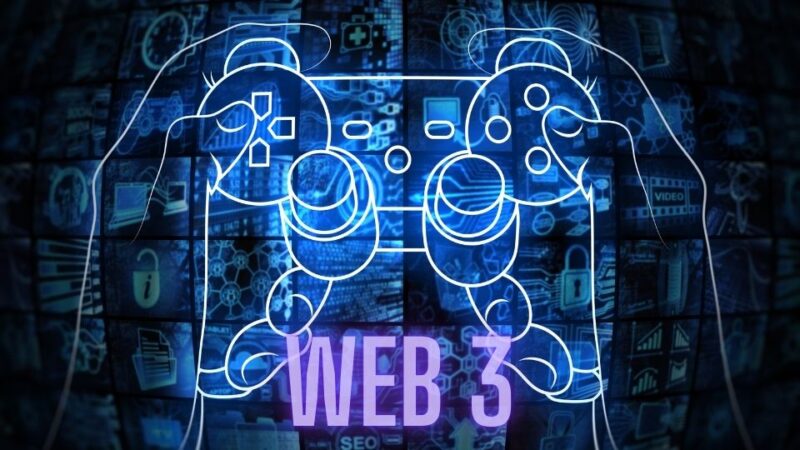The world of Web3 games continues to evolve, albeit with fits and starts. Ideally, Web3 games promise a future where players have true ownership of in-game assets and the ability to trade and earn from their digital adventures.
However, the excitement around Web3 games is often tempered by the limitations of blockchain technology, particularly in terms of transaction speed and cost. In addition, many gamers continue to be leery of playing Web3 games due to past issues with problematic game designs. Essentially, many of these games were simply not fun to play. Initially, many game developers focused mainly on the monetary aspects of Web3 games instead of creating engaging experiences for their audiences.
These two overarching issues can continue to hinder the seamless and immersive experience that gamers expect. Our focus here is less on game development and more on the technical aspects of enlarging the web3 gaming environment. However, the creative aspect of Web3 gaming is also critical to expanding the adoption of Web3 games by global player bases.
After many fits and starts, a variety of scaling solutions have been implemented to address the technical challenges. It remains to be seen if these solutions can ensure that Web3 games reach their full potential.
Related: An Introduction to Web3 Games
Understanding the Limitations of Blockchain in Web3 Games
Transaction Speed: One of the significant challenges faced by blockchain-based games is the slow transaction speed. Blockchain’s decentralized nature means that each transaction must be verified by multiple nodes before being added to the blockchain. This process, while secure, can be time-consuming, leading to delays that are unacceptable in a fast-paced gaming environment. For instance, waiting several minutes for a transaction to be confirmed can disrupt gameplay and frustrate players.
Transaction Costs: High transaction fees, often referred to as “gas fees,” are another major hurdle. These fees can vary significantly, but during periods of high network congestion, they can become prohibitively expensive. For casual gamers, the idea of paying several dollars just to perform basic in-game actions is a significant deterrent. This issue is particularly problematic for games that rely on frequent transactions, such as trading items or executing smart contracts.
Scalability Issues: Scalability refers to a blockchain’s ability to handle a growing number of transactions. Most traditional blockchains, like Bitcoin and Ethereum, struggle with scalability. This limitation is critical for Web3 games, especially multiplayer and real-time games that require high throughput to function smoothly. Without effective scalability solutions, these games cannot support large player bases or complex in-game economies.
Layer 1 Solutions
Ethereum 2.0: Ethereum, one of the most popular blockchains for Web3 games, is undergoing significant upgrades to address scalability issues. Ethereum 2.0 introduces sharding, which divides the network into smaller, more manageable pieces (shards), allowing for parallel processing of transactions. This upgrade, combined with the recent shift from proof-of-work to proof-of-stake consensus mechanism, is expected to significantly increase Web3 gaming transaction speed and reduce costs.
Other Layer 1 Blockchains: Beyond Ethereum, other Layer 1 blockchains like Polygon, Solana, and Binance Smart Chain offer alternative solutions. Solana, for example, is known for its high throughput, capable of handling thousands of transactions per second at a fraction of the cost compared to Ethereum. These blockchains provide viable alternatives for developers looking to build scalable Web3 games.
Layer 2 Solutions
State Channels: State channels are an innovative Layer 2 solution that allows multiple transactions to occur off-chain before recording the final state on the blockchain. By doing so, they reduce the load on the main blockchain and significantly lower transaction costs. This method is particularly useful for Web3 games, where numerous small transactions can be aggregated and settled in one go.
Plasma: Plasma is another Layer 2 framework that helps scale blockchain applications by creating smaller chains (child chains) that run alongside the main blockchain. These child chains handle the bulk of the transactions, only periodically communicating with the main chain to finalize the results. This approach can dramatically improve transaction speed and reduce fees, making it ideal for Web3 games with high transaction volumes.
Rollups: Rollups come in two main types: optimistic rollups and zk-rollups. Both solutions involve bundling multiple transactions into a single batch that is then processed on the main chain. Optimistic rollups assume transactions are valid by default and only check them if there is a dispute, while zk-rollups use zero-knowledge proofs to verify transactions. Both methods significantly enhance scalability and reduce costs, making them suitable for complex and high-frequency gaming interactions.
Sidechains and Interoperability
Sidechains: Sidechains operate as separate blockchains connected to the main chain, allowing transactions to be processed independently. This separation helps offload traffic from the main blockchain, improving overall scalability. Sidechains can be tailored specifically for gaming needs, providing faster transaction speeds and lower costs.
Interoperability Protocols: Protocols like Polkadot and Cosmos facilitate communication between different blockchains, enhancing their scalability and functionality. By enabling various blockchains to work together, these protocols can support more complex gaming ecosystems and allow assets and data to move seamlessly between different platforms.
Off-Chain Computing and Hybrid Solutions
Off-Chain Computing: Off-chain computing involves performing complex computations outside the blockchain, only recording the results on-chain. This method reduces the computational load on the blockchain, allowing for more efficient use of resources. For Web3 games, off-chain computing can handle intensive tasks like graphics rendering and game logic, improving performance and scalability.
Hybrid Solutions: Hybrid solutions combine on-chain and off-chain methods to optimize performance. By leveraging the strengths of both approaches, hybrid solutions can offer the security of blockchain technology while maintaining the speed and efficiency of traditional gaming systems. These solutions provide a balanced approach to scaling Web3 games, ensuring they can handle large player bases and complex in-game economies.
Case Studies
Alien Worlds: Alien Worlds, another notable Web3 game, employs the WAX blockchain to overcome scalability challenges. WAX is designed specifically for high-frequency transactions with minimal fees, making it an ideal choice for a game that requires constant player interactions and transactions. By leveraging the WAX blockchain, Alien Worlds ensures that its players can enjoy a seamless gaming experience with fast and affordable transactions. This strategic use of a blockchain tailored for gaming highlights the importance of choosing the right infrastructure to support a large and active player base, further showcasing the versatility of scaling solutions in the Web3 gaming space.
Axie Infinity: Axie Infinity, a popular Web3 game, uses Ronin, a custom sidechain, to handle transactions efficiently. This approach allows Axie Infinity to bypass Ethereum’s congestion and high fees, providing a smoother gaming experience for its players. The success of Ronin demonstrates the potential of sidechains in scaling Web3 games.
Gods Unchained: Gods Unchained utilizes Immutable X, a Layer 2 solution built on zk-rollups, to achieve scalability and reduce transaction fees. By leveraging Immutable X, Gods Unchained can offer its players fast and cost-effective transactions without compromising on security. This case study highlights the effectiveness of rollups in enhancing the performance of Web3 games.
Other Examples: Other notable Web3 games, such as Decentraland and CryptoKitties, also employ various scaling solutions to address blockchain’s limitations. These games showcase the diversity of approaches available and the importance of choosing the right solution for each specific game.
Future Prospects and Innovations
Emerging Technologies: The future of Web3 games looks promising, with several emerging technologies on the horizon. Blockchain sharding, for instance, continues to evolve, promising even greater scalability. Additionally, advancements in zero-knowledge proofs and other cryptographic techniques are expected to further enhance transaction speed and security.
Developer and Community Involvement: The success of scaling solutions for Web3 games depends heavily on the involvement of developers and the gaming community. By actively participating in the development and adoption of these solutions, they can help drive innovation and ensure the continued growth of Web3 gaming.
Related: Soaring Bitcoin at $50K Fuels Web3 Gaming
Scaling Web3 Gaming Beyond the Limitations
The limitations of blockchain technology, particularly regarding transaction speed and cost, pose significant challenges for Web3 games. However, a variety of scaling solutions, including Layer 1 and Layer 2 approaches, sidechains, and hybrid methods, are being implemented to address these issues.
By leveraging these solutions, Web3 games can achieve the necessary scalability to provide seamless and engaging experiences for players. As these technologies continue to evolve and improve, the future of Web3 gaming looks incredibly bright, offering exciting opportunities for both developers and gamers.





